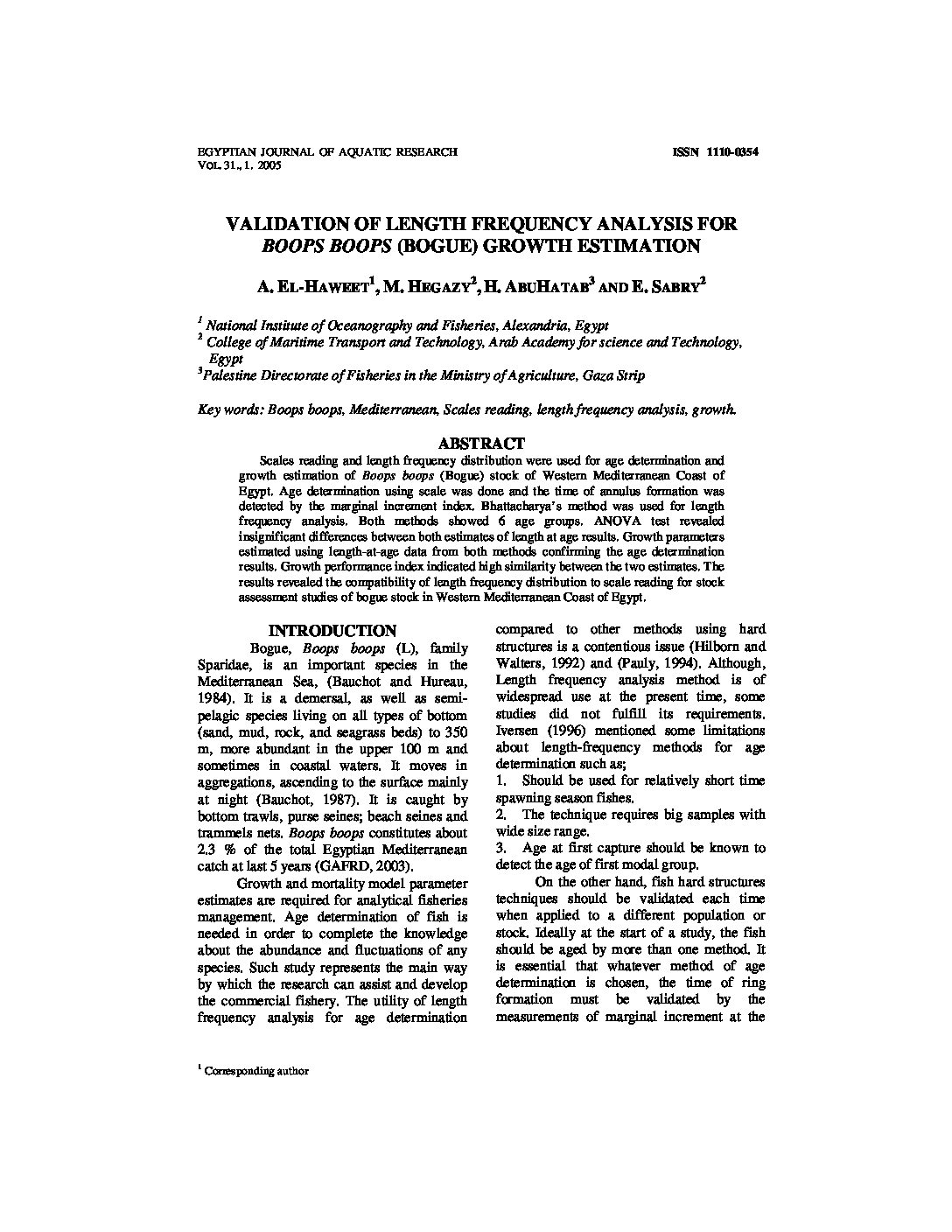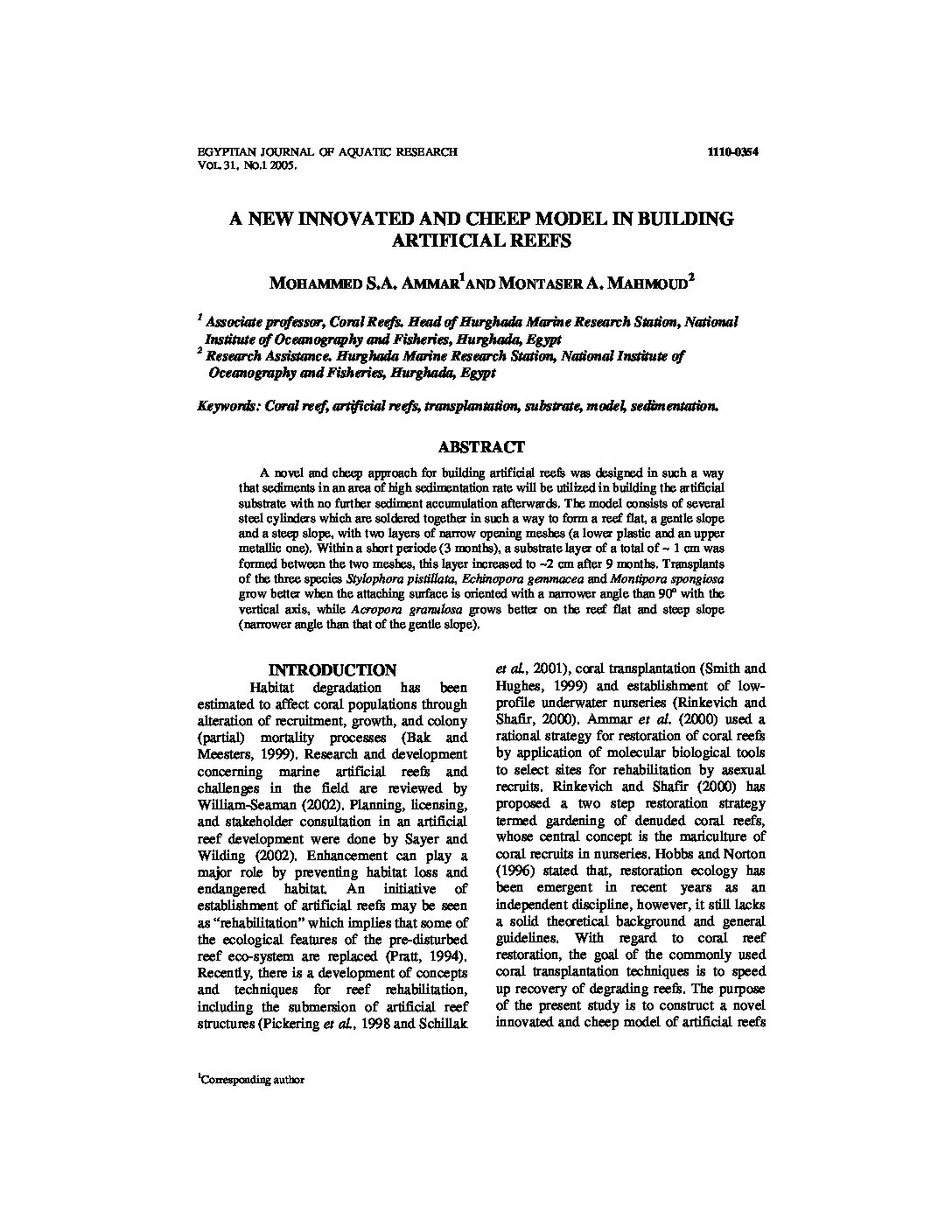Categories
vol-31USE OF RICE HUSK FOR ADSORPTION OF DIRECT DYES
FROM AQUEOUS SOLUTION: A CASE STUDY OF
DIRECT F. SCARLET
OLA ABDELWAHAB, AHMED EL NEMR*, AMANY EL SIKAILY, AZZA KHALED
Environmental Division, National Institute of Oceanography and Fisheries, Kayet Bay,
El-Anfushy, Alexandria, Egypt
Key words: Adsorption, Rice Husk, Direct Red-23, Isotherms, Kinetics
ABSTRACT
Dyes are widely used for coloring in textile industries, and significant losses occur
during the manufacture and processing of dyes, and these lost chemicals are discharged in
the effluent. Adsorption of dyes is a new technology for treatment of wastewater containing
different types of dyes. The goal of this research is to develop a new and efficient
adsorbent of direct dyes. Thus, rice husk, a commonly available agriculture waste in Egypt,
was investigated as viable materials for treatment of synthetic Direct F. Scarlet (Direct Red
23) containing industrial wastewater. The results obtained from the batch experiments
revealed the ability of the rice husk in removing the Direct Red 23 and are dependent on the
dye and rice husk concentrations. Maximum dye colour removal was observed after 72
hours for all the system conditions. Kinetics of adsorption was investigated as well as
equilibrium isotherm of Direct Red 23 using Langmuir model, which represented a
correlation coefficient > 0.96. Activation of rice husk was studied in order to increase its
capacity to remove the dye. The maximum adsorption capacity was ~13 mg of dye per one
gram of dry rice husk. This study showed that the rice husk could be employed as low-cost
and effective sorbent for the removal of Direct F. Scarlet from aqueous solution.







